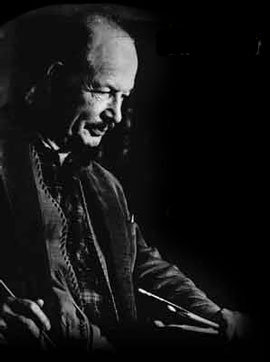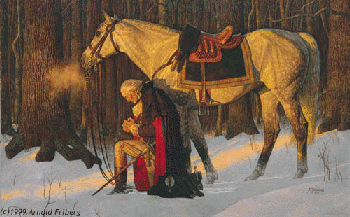Arnold Friberg
Arnold Friberg was an American artist born on December 21, 1913, in Winnetka, Illinois, son of a Swedish father and a Norwegian mother. At the age of 3 Arnold moved to Arizona with his sister, Gertrude, and his parents. By age 7 young Friberg was already drawing original cartoons. Mr. Friberg remembers, "I never had to take an aptitude test, I always knew what I wanted to do, art."
The Fribergs were able to scrape together enough money to enroll Arnold in a correspondence course at the age of 10. While in Phoenix Arizona, young Friberg often shared his drawings with the newspaper staff of the Arizona Republican and he learned from them. During his high school years, Arnold earned money by making signs for local businesses. After graduating from high school, he began his studies at the Chicago Academy of Fine Arts.
Friberg's favorite artist was Edwin Austin Abbey, who painted at the end of the 19th and beginning of the 20th century and painted Arthurian legends. His second favorite was Sir Lawrence Alma-Tadema, Cecil B. DeMille's favorite artist. Alma-Tedema traveled to museums in the ancient world. His paintings included the antiquities he found there, and he was famous in Hollywood for this authenticity and that of the historical costumes he painted.
Perhaps Friberg's most famous and popular patriotic work is his 1975 painting, "The Prayer at Valley Forge," a depiction of George Washington praying at Valley Forge, the site of the camp of the American Continental Army over the winter of 1777-1778 during the American Revolutionary War. Friberg is also well known for his fifteen previsualization paintings for the Cecil B. DeMille film "The Ten Commandments," used to promote the film worldwide. Friberg received a nomination for an Academy Award for these paintings. Friberg has been admitted as a lifetime member of the Royal Society of Arts. He is a member of The Church of Jesus Christ of Latter-day Saints, for whom he did a series of paintings depicting scenes from the Book of Mormon.
Those paintings appeared in 1948, and soon after Cecil B. Demille saw the paintings, especially the painting of the Brother of Jared and the lighted stones. The originals now hang in the LDS Conference Center in Salt Lake City.
Also in 1948 Arnold accepted a commission to do scenes of the American West for a calendar series by the Louis F. Dow Calendar Company. This would become the start of his serious interest in the West. By 1950 Arnold and his wife had moved to Utah, and Arnold started teaching commercial art at the University of Utah. It was while Friberg was teaching at the U of U that Demille knew he had found his artist.
This led to the Fribergs move to Hollywood in 1953. There, Arnold worked with Cecil B. DeMille for over three years on "The Ten Commandments" as his chief artist and designer. Arnold worked closely with DeMille to visualize, through hundreds of sketches and paintings, a variety of scenes and human characters for the motion picture.
While his paintings are realistic and historically correct, it was Mr. Friberg's extraordinary ability to capture not only the drama of history, but also the vibrancy and inner strength of human characteristics that earned him the respect and recognition as one of the greatest master painters of modern times.
Arnold Friberg died Thursday, July 1, 2010, at age 96 in Salt Lake City where he was convalescing from hip replacement surgery. [1]
True to the artist's desires, the Utah Cultural Arts Foundation will purchase all of the artwork Friberg possessed at the time of his death for the planned Arnold Friberg Museum of Art. The museum will be at a Utah location that is yet to be determined.
The purchase agreement was signed at Friberg's home on June 21, 2010, the same evening he fell and broke his hip, the injury that led to his death. [2]

